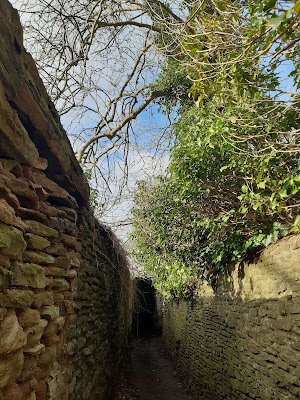I had trips planned to the Midlands and Glastonbury this half term, but my friends' medical issues - and my own compromised shoulder, which makes driving challenging right now - meant a postponement was in order, and instead, I managed to drive the few miles from my house to Badock's Wood for a change of scene.
Cwtch on the neolithic round barrow, Mill Tut
I have to remind myself that February isn't as bad as I think it is. It's brighter than January and green things are beginning to burgeon. Meanwhile, last autumn's leaves become skeletal and fascinating.
Can I help curate your collection of delicate things?
Down in the wood it was sad to see that the River Trym is currently polluted, all the more so since this grey wagtail was picking its way over stones just a short way downstream.
Elsewhere in the wood there were the usual signs of early spring ...
and a bumble bee
Cwtch's desire to play with the crows was tempered by her un-collie-like reluctance to get her paws wet ...
...although she did briefly overcome it.
At the edge of the playing field above the Trym's little gorge, the first signs of cherry plum blossom. It's been a cold, dark winter. Hopefully the worst is behind us.














































































